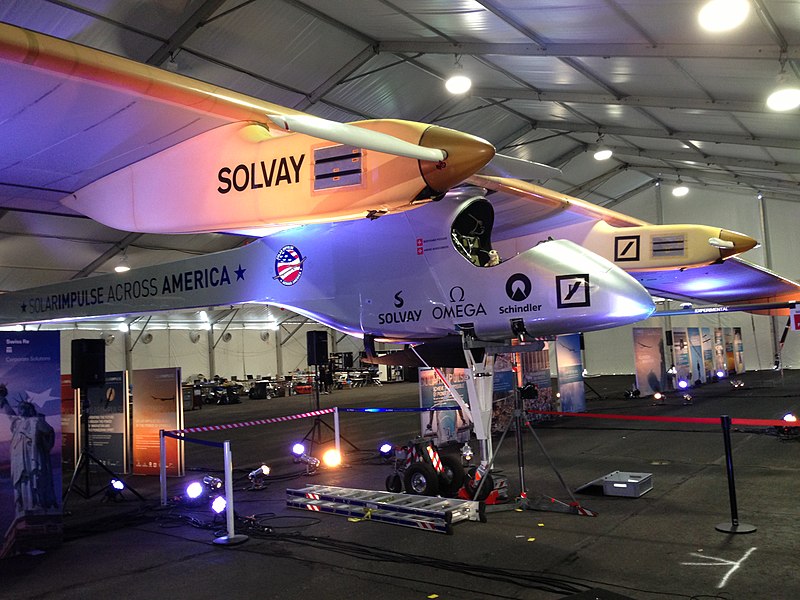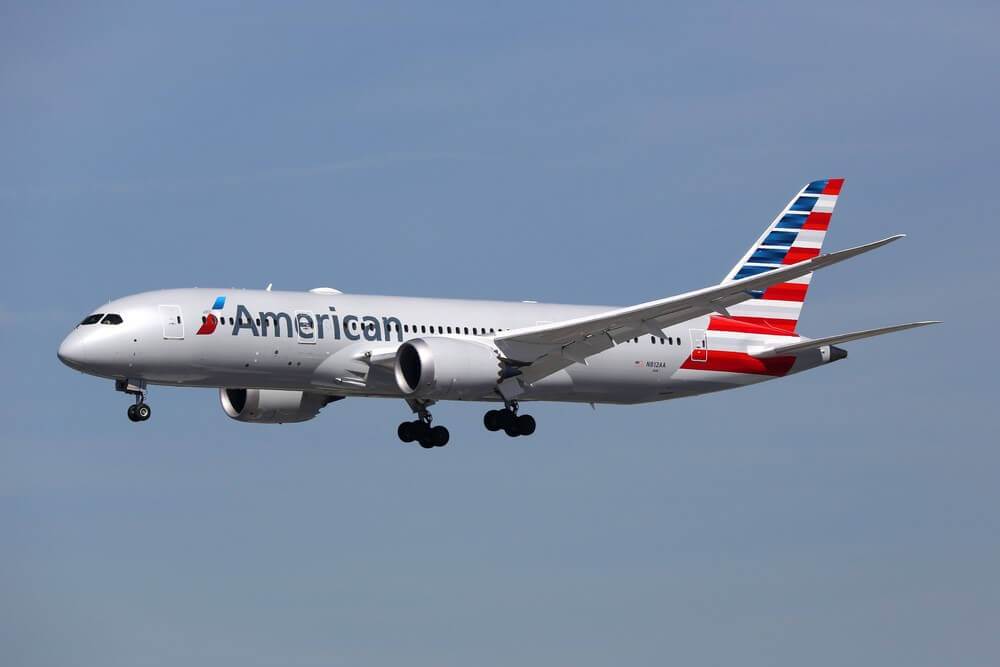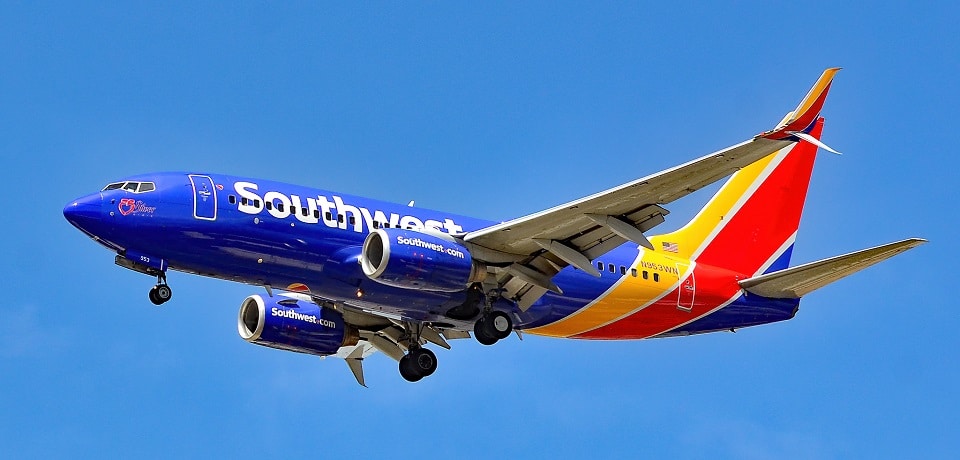Aviation
10 things you must know about Solar Impulse 2

1. Flying Capacity : Solar Impulse is the only airplane of perpetual endurance, able to fly day and night on solar power, without a drop of fuel. Solar Impulse 2 will climb to 8,500 meters (5.28 miles) during the day, where it can reach its maximum speed and store more solar energy for the night. As dusk arrives, the plane will descend to an altitude of 1,500 meters (0.9 miles) where its speed slows and it’s easier to remain aloft.
2. Size : This revolutionary single-seater aircraft made of carbon fiber has a 72 meter wingspan (larger than that of the Boeing 747-8I) for a weight of just 2,300 Kg, equivalent to that of a car.
Structure : build the entire structure proportionately 10 times lighter than that of the best glider. Every gram added had to be deducted somewhere else, to make room for enough batteries on board, and provide a cockpit in which a pilot can live for a week. In the end, it is of the weight of a small van: 2’300kg!
3. Battery : The 17,000 solar cells built into the wing supply four electric motors (17.5 CV each) with renewable energy.During the day, the solar cells recharge lithium batteries weighing 633 Kg (2077 lbs.) which allow the aircraft to fly at night and therefore to have virtually unlimited autonomy
4. Motors : Four brushless, sensorless motors, each generating 17.4 hp (13.5 k), mounted below the wings, and fitted with a reduction gear limiting the rotation speed of a 4 m diameter, two-bladed propeller to 525 rev / min. The entire system is 94% efficient, setting a record for energy efficiency
5. Speed : Solar Impulse can fly at the same speed than a car, between 36 km/h (20 Kts) and 140 km/h (77 Kts).
(At sea level: minimum speed of 45 km/h (20 Kts) and maximum speed of 90 km/h (49 Kts). At maximum altitude: from 57 km/h (31,5 Kts) to 140 km/h (77 Kts).)

6. Robustness :
The upper wing surface is covered by a skin consisting of encapsulated solar cells, and the lower surface by a high-strength, flexible skin. 140 carbon-fiber ribs spaced at 50 cm intervals give the wing its aerodynamic cross-section, and also maintain its rigidity.
7. Simulation Training :
long-duration round-the-world flights by training them on virtual missions in the flight simulator. The idea is to test their ability to endure three days and nights alone in a cockpit of less than 9ft x 5ft x 3ft at an altitude between 3,000ft and 27,000ft. André Borschberg came through the first 72-hour simulation in 2012 with flying colors.
8.World Record
Solar Impulse with Bertrand Piccard, broke the world records of distance and duration for solar aviation, as well as the world record for the longest solo flight ever (117 hours and 52 minutes — around 7,200 km, 4,474 miles).
- Flight time: 117:52 hours\
- Maximum altitude: 8,634 m (28,000 ft)
- Average speed: 61.19 km/h, 38 mi/hr
- Flight plan distance: 7,212 km, 4,481 mi
9. Solar Impulse 2 Project Plan:
- 12 years of feasibility study, concept, design and construction
- 50 engineers and technicians
- 80 technological partners
- more than 100 advisers and suppliers
- 1 prototype (Solar Impulse 1, registered as HB-SIA)
- 1 final airplane
(Solar Impulse 2, registered as HB-SIB)

10. Pilot food & Exercise:
The pilot’s daily intake is 2.4 kg (5.2 lbs) of food, 2.5 liter (84.5 oz, 0.66 US gallon, almost 3 US quarts) of water, and 1 liter (33.8 oz, 0.26 US gallon, 1 US quart) of sports drink per day. His meals include a breakfast, a lunch prepared to be as similar as possible to homemade meals, and snacks including dried fruits and chocolate.During a typical 24-hour flight cycle, the pilot rests 8 times, averaging between 5 and 20 minutes per session. Borschberg also performed yoga 30 to 45 minutes a day to stay fit and prevent any potential negative effects of immobility.
You wanna like to meet the Si2 team? click here
liked it ..! ?
Share with your friends and families

Aviation
All passengers killed in plane crash, after pilot let his children to control the plane

When boarding a plane, passengers entrust their safety to the skilled hands of the pilot. However, tragedy struck when one of the flight ended in disaster as all passengers lost their lives in a horrific plane crash.
In 1994, during a flight from Moscow to Hong Kong, tragedy struck as an Aeroflot relief pilot made a fateful decision. In a move that would have devastating consequences, the pilot invited his own children into the cockpit to play with the controls. Little did anyone know, this seemingly innocent gesture would lead to the loss of all 75 lives aboard the aircraft.
It was a seemingly innocent act that led to catastrophic results. The relief pilot, Mr. Kudrinsky, invited his two children, Yana, 12, and Eldar, 15, into the cockpit during the late hours of the night. Little did anyone know, this simple gesture would set off a chain of events that would end in tragedy.
Once in the cockpit, the children were allowed to sit in the captain’s chair and play with the controls, unaware that they should have been disabled as the plane was in autopilot mode.
Eldar, perhaps in a moment of curiosity or innocence, held the control column down for a mere 30 seconds. Yet, in those brief moments, the autopilot disengaged, thrusting the aircraft into manual control.
By the time the pilots regained their seats and attempted to regain control, it was too late. Despite their efforts to pull the plane out of a dive, they overcorrected, causing the flight to climb almost vertically, ultimately stalling it.
Final moment Flight 593 crash
In the final moments, as the pilots struggled to stabilize the aircraft, Flight 593 crashed into the Kuznetsk Alatau Mountain range in southern Russia, completely obliterating the plane and claiming the lives of everyone on board.
Investigations revealed a chilling truth: there was no evidence of technical failure. Instead, the crash was attributed to the unthinkable decision to allow inexperienced hands to manipulate the controls of a commercial aircraft.
The black box recording captured the harrowing sequence of events, providing a grim reminder of the human cost of a lapse in judgment. In just over two minutes, the lives of all on board were tragically short, leaving behind a legacy of sorrow and unanswered questions.
Aviation
American Airlines Flight Attendant Orders First-Class Traveler to use Economy Restroom

On a recent American Airlines flight from Chicago O’Hare to Phoenix, Pamela Hill-Veal, a retired circuit court judge, found herself at the center of a disturbing incident.
Despite traveling in First Class, she was directed by a flight attendant to use the Economy Class restroom, sparking allegations of racial discrimination. According to Hill-Veal, the ordeal began when she used the dedicated First Class lavatory during the flight. A flight attendant approached her, accusing her of slamming the door and issued a warning.
Despite remaining calm, Hill-Veal faced further confrontation when she attempted to use the First Class restroom again later in the flight. The situation escalated as the flight attendant persisted in berating Hill-Veal, who felt targeted due to her race. She highlighted the disparate treatment, noting that white passengers were not subjected to similar directives.
In a distressing turn, the flight attendant followed Hill-Veal to her seat and allegedly touched her while threatening arrest upon landing. This alarming encounter left Hill-Veal feeling humiliated and traumatized, impacting her ability to rest even after the flight.
American Airlines has responded, expressing a commitment to investigating the matter and addressing discrimination claims seriously. However, the incident underscores ongoing concerns about racial bias in air travel and the need for accountability in ensuring all passengers are treated with dignity and respect.
Aviation
Southwest CEO Signals Major Shift: Farewell to Open Seating

Southwest Airlines is contemplating a significant shift away from its traditional open seating policy, a move that could signal a departure from its long-standing business model.
The potential change, which would introduce assigned seating and premium seat options, is being considered to appeal to a younger demographic of travelers. This adjustment would mark one of the most substantial alterations for the carrier since its inception in 1971.
Unlike its competitors who have embraced premium seating offerings, Southwest has stuck to its open seating approach, albeit providing the option for early boarding at a fee. However, with rivals like United Airlines witnessing revenue growth from premium seating, Southwest is reevaluating its strategy. According to Forbes, the airline industry has seen a shift in customer preferences over time, prompting Southwest to reconsider its seating model designed during an era of lower load factors.
While Southwest CEO, Jordan,told to CNBC that he has neither confirmed nor denied the possibility of premium seating, he acknowledges that the company is exploring various options. He emphasized that while it’s still early in the decision-making process, the initial results are promising, hinting at potential changes in the future.
Southwest currently operates with a single economy class cabin across its all-Boeing 737 fleet, with no assigned seating. However, the airline does offer the option for early boarding for passengers to secure their preferred seats for an additional fee. Over the years, Southwest has maintained a focus on simplicity and user-friendliness in its offerings, striving to minimize costs and complexity.
In contrast, competitors like Delta and United have capitalized on revenue growth from premium seating options such as business class, demonstrating strong upsell rates. Analysts have repeatedly questioned Southwest about the potential for introducing premium seating or additional fees, although the airline has traditionally refrained from charging for the first two checked bags.
For now, the only way Southwest passengers can secure their preferred seats is by paying for an earlier boarding position, as the airline continues to operate without assigned seating, allowing passengers to choose their seats upon boarding in a predetermined order.





















